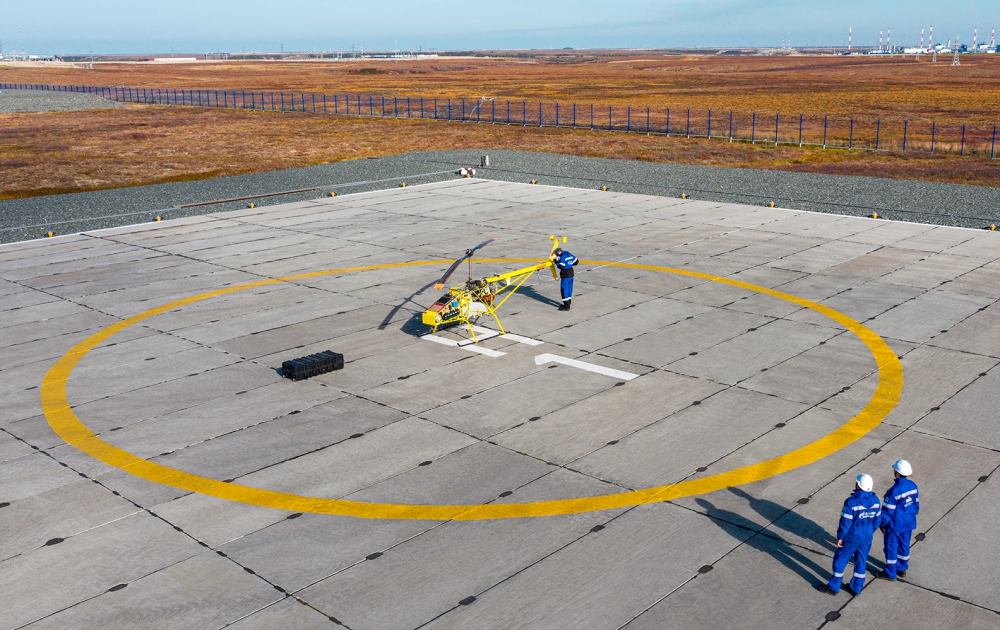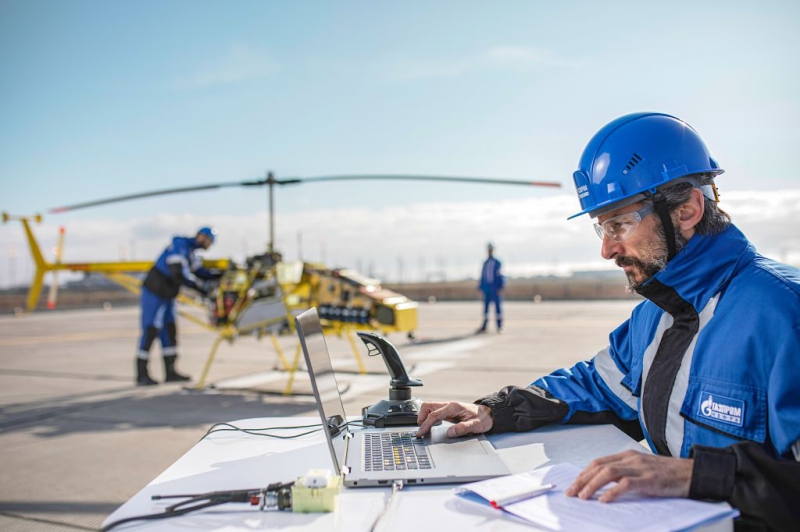The Tiber helicopter testing was the third test of unmanned technologies in logistics that Gazprom Neft conducted in 2020 at its upstream assets. Earlier, the company tested in the territory of Yamal and Yugra a cargo ground transport capable of working in an autonomous mode. Based on the results of the tests carried out, Gazprom Neft will accelerate the process of introducing unmanned solutions into its logistics processes and will continue to actively participate in the formation of the legal framework governing the use of unmanned vehicles in Russian oil fields.
Evgeny Kozhevnikov Head of the Logistics Department, Procurement and Capital Construction Directorate, Gazprom Neft:
“Today the company synchronizes its own advanced experience in the development of Arctic deposits with innovative solutions offered by experts in various sectors of the domestic industry. The result of this partnership is new business processes and services in warehouse logistics, cargo transportation and life support of our remote oil fields. We systematically test unmanned technologies on the ground and in the air, and integrate digital solutions into the production cycle to create the safest and most efficient environment for our oil production teams. “
Dmitry Potapov General Director of Gazpromneft-Procurement:
“In Russia, unmanned aerial technologies are developing very actively and are not inferior in their characteristics to foreign counterparts. The successful testing of an unmanned aerial complex for the transportation of goods in the Arctic is another step towards transforming our logistics processes. The level of effective use of new technologies in warehouse and transport logistics by Gazpromneft-Snabzhenie makes it possible to speak of a completely new approach to the creation and operation of the logistics infrastructure, based on modern solutions that have proven their economic efficiency ”.
 The Messoyakha group of fields includes the Vostochno (Eastern) and Zapadno (Western) Messoyakhskoye blocks located in the Gydan Peninsula, in the Tazovsky district of the Yamalo-Nenets Autonomous Okrug. Licenses to both blocks are owned by Messoyakhaneftegaz, jointly controlled by Rosneft and Gazprom Neft — the operator on the project. The field is considered unique in terms of its proved reserves. The development is being undertaken with very limited access to industrial and transportation infrastructure. President of the Russian Federation, Vladimir Putin, gave the instruction to commence commercial production at the field via video link on 21 September 2016. Total cumulative production at the Vostochno-Messoyakhskoye field over the four years it has been in operation stands at 17.5 million tonnes of oil.Gazpromneft-Snabzhenie is a subsidiary of Gazprom Neft, which provides transport and warehouse logistics services, manages the procurement of material and technical resources for enterprises of the fuel and energy complex and other industries. Today the number of the company’s personnel is more than 3000 people. Gazpromneft-Snabzhenie has open and closed warehouses with a total area of over 500,000 sq. M. The company’s specialists carry out acceptance of more than 820 wagons per month. The Gazpromneft-Snabzhenie automobile fleet comprises over 600 units of various equipment. The company provides services for the transportation of long and heavy cargo.TAYBER LLC is one of the domestic leaders in the development and production of integrated control systems for unmanned aerial vehicles used in various fields of industry and the defense industry. The company has extensive experience in upgrading existing aircraft to unmanned or optionally manned aircraft. The KAGU-150 unmanned aerial vehicle with a takeoff weight of 500 kg, which took part in tests at the Vostochno-Messoyakhskoye field, is capable of non-stop transport of up to 150 kg of cargo at a cruising speed of 160 km / h. The UAV can be monitored and controlled from several ground stations, including remote ones, via satellite or commercial communication channels. The flights were carried out in a continuous exchange of information with the Center for Organizing the Traffic of Unmanned Vehicles,
The Messoyakha group of fields includes the Vostochno (Eastern) and Zapadno (Western) Messoyakhskoye blocks located in the Gydan Peninsula, in the Tazovsky district of the Yamalo-Nenets Autonomous Okrug. Licenses to both blocks are owned by Messoyakhaneftegaz, jointly controlled by Rosneft and Gazprom Neft — the operator on the project. The field is considered unique in terms of its proved reserves. The development is being undertaken with very limited access to industrial and transportation infrastructure. President of the Russian Federation, Vladimir Putin, gave the instruction to commence commercial production at the field via video link on 21 September 2016. Total cumulative production at the Vostochno-Messoyakhskoye field over the four years it has been in operation stands at 17.5 million tonnes of oil.Gazpromneft-Snabzhenie is a subsidiary of Gazprom Neft, which provides transport and warehouse logistics services, manages the procurement of material and technical resources for enterprises of the fuel and energy complex and other industries. Today the number of the company’s personnel is more than 3000 people. Gazpromneft-Snabzhenie has open and closed warehouses with a total area of over 500,000 sq. M. The company’s specialists carry out acceptance of more than 820 wagons per month. The Gazpromneft-Snabzhenie automobile fleet comprises over 600 units of various equipment. The company provides services for the transportation of long and heavy cargo.TAYBER LLC is one of the domestic leaders in the development and production of integrated control systems for unmanned aerial vehicles used in various fields of industry and the defense industry. The company has extensive experience in upgrading existing aircraft to unmanned or optionally manned aircraft. The KAGU-150 unmanned aerial vehicle with a takeoff weight of 500 kg, which took part in tests at the Vostochno-Messoyakhskoye field, is capable of non-stop transport of up to 150 kg of cargo at a cruising speed of 160 km / h. The UAV can be monitored and controlled from several ground stations, including remote ones, via satellite or commercial communication channels. The flights were carried out in a continuous exchange of information with the Center for Organizing the Traffic of Unmanned Vehicles,
Source: Press Release


